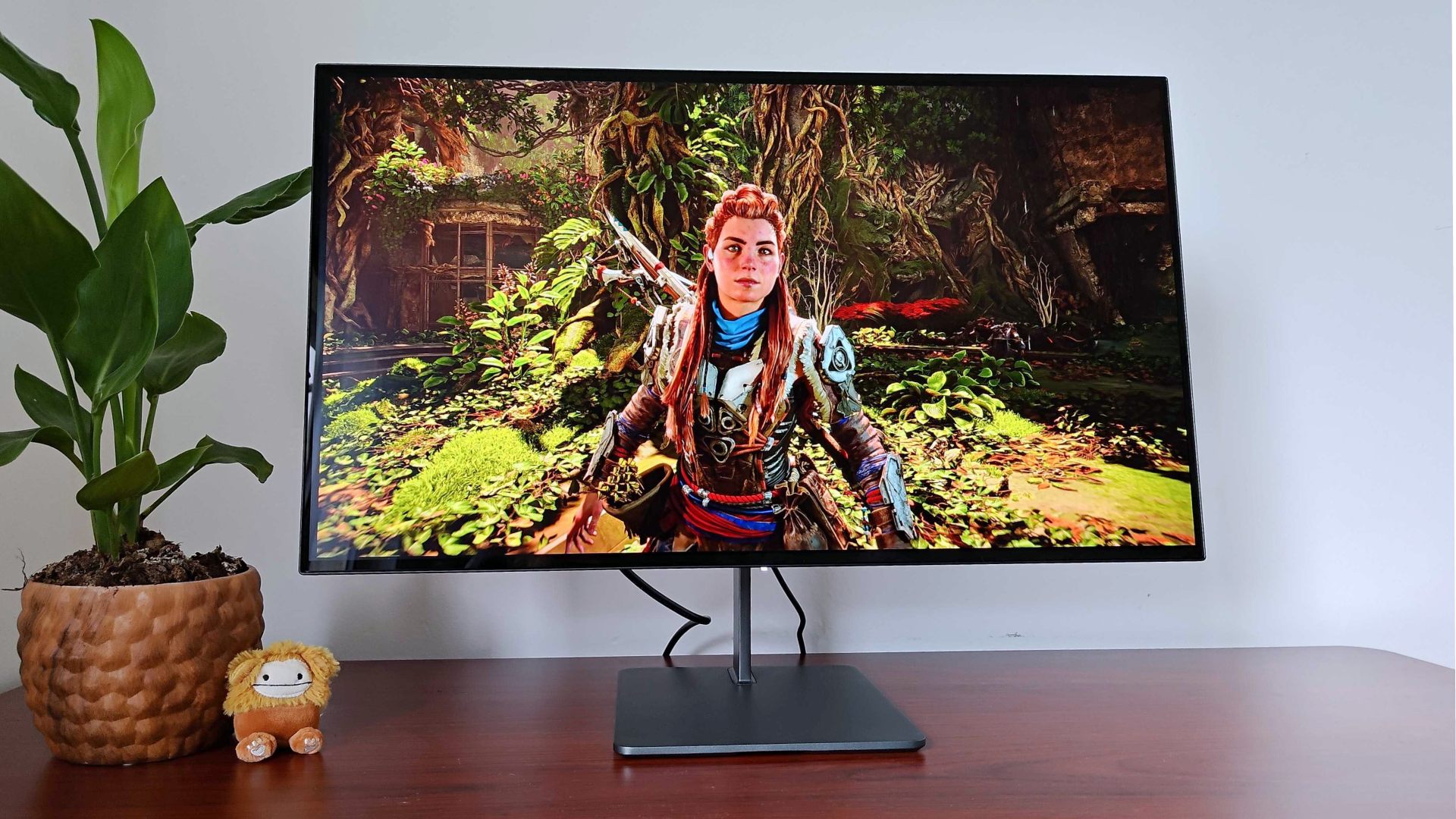
Out of all the gaming monitors I test, OLED displays normally excite me the most. So, upon hearing that the Dough Spectrum Black would blend the display maker's excellent glossy gorilla glass screen with a vibrant panel, I knew I’d be in for something special. Now that I’ve taken the model out for a test run, I can confirm it lives up to most of my personal hype, but its illustrious price tag means I’d ultimately prefer to drive away with its cheaper LCD sibling.
You might want to sit down for this one, as the Dough Spectrum Black comes in at $1,099.99. Sure, many of the best gaming monitors out there sit at over a grand, but we’re talking about a 26.5-inch 1440p display here. It does boast that new OLED panel and aforementioned gorilla glass coating, and I’m open to the idea of those traits justifying the higher MSRP. But, in the context of the QHD screen scene right now, it looks upsettingly pricey at a glance.
And, ultimately, it’s worth not letting the Spectrum Black’s lofty MSRP dominate the conversation, as the screen is pretty unique. Not only that, but Dough seems to be improving its recipe every time it fires a new model into the oven, and it’s exciting to see monitor makers keep on innovating rather than stick with the same old. That said, it has inherent a few traits I’m not on board with from Dough Spectrum One, so it’s not completely off the hook.
Specs
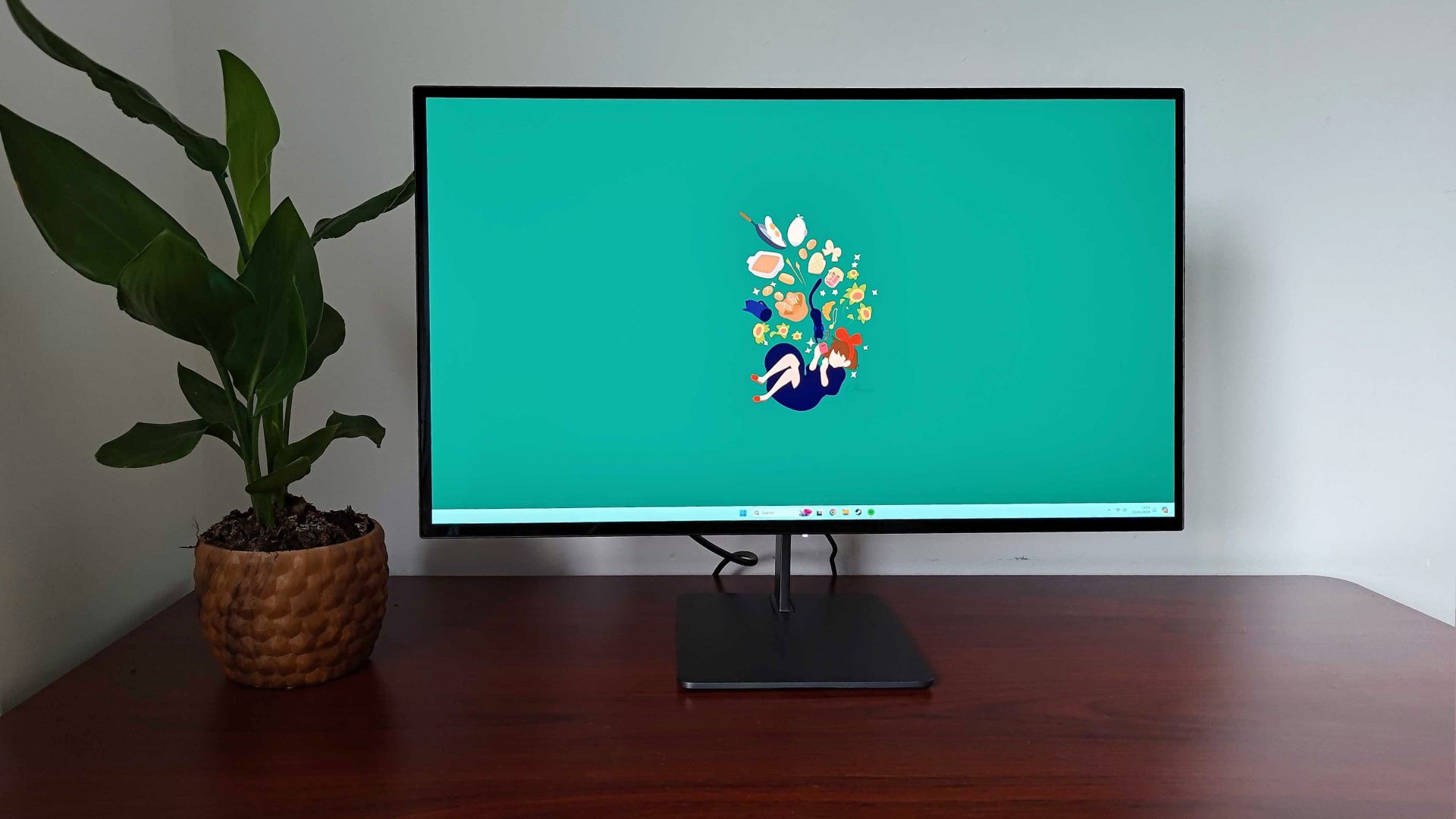
I’ve already spilled the beans on a few Dough Spectrum Black specs, but allow me to fully run through the recipe. At its core, the model I'm testing is a 1440p 240Hz OLED display paired with a gorilla glass overlay. At this point, it’s safe to say that glossy coatings are the monitor maker’s main party trick, and I’m pretty on board with the visual flair they provide.
1000 nits peak brightness, HDR10, and a 0.03ms response time help drive home the fact that this is a fully-fledged gaming monitor. In fact, it shares a lot in common with the Corsair Xeneon 27QHD240, a display that embodies everything I’d look for in a screen for first-person shooters. It is slightly sus that both panels are the exact same size and share almost the same specs, but that’s likely because they’re rocking the same LG innards.
Dough rounds off its tasty OLED formula with a generous IO sprinkling, including two HDMI 2.1 ports, DisplayPort 1.4, and a comprehensive USB-C hub. KVM switching and 100W Power Delivery are also part of the package, giving you another reason to chuck your Steam Deck dock into the drawer of doom (we all have one).
What the Dough Spectrum Black still doesn’t include by default is a stand, and I can’t say I’m vibing with the company’s philosophy on that front. I get that some people out there are going to pick up a monitor arm anyway, but I’m willing to bet that most will just end up paying even more for the complete package.
Design
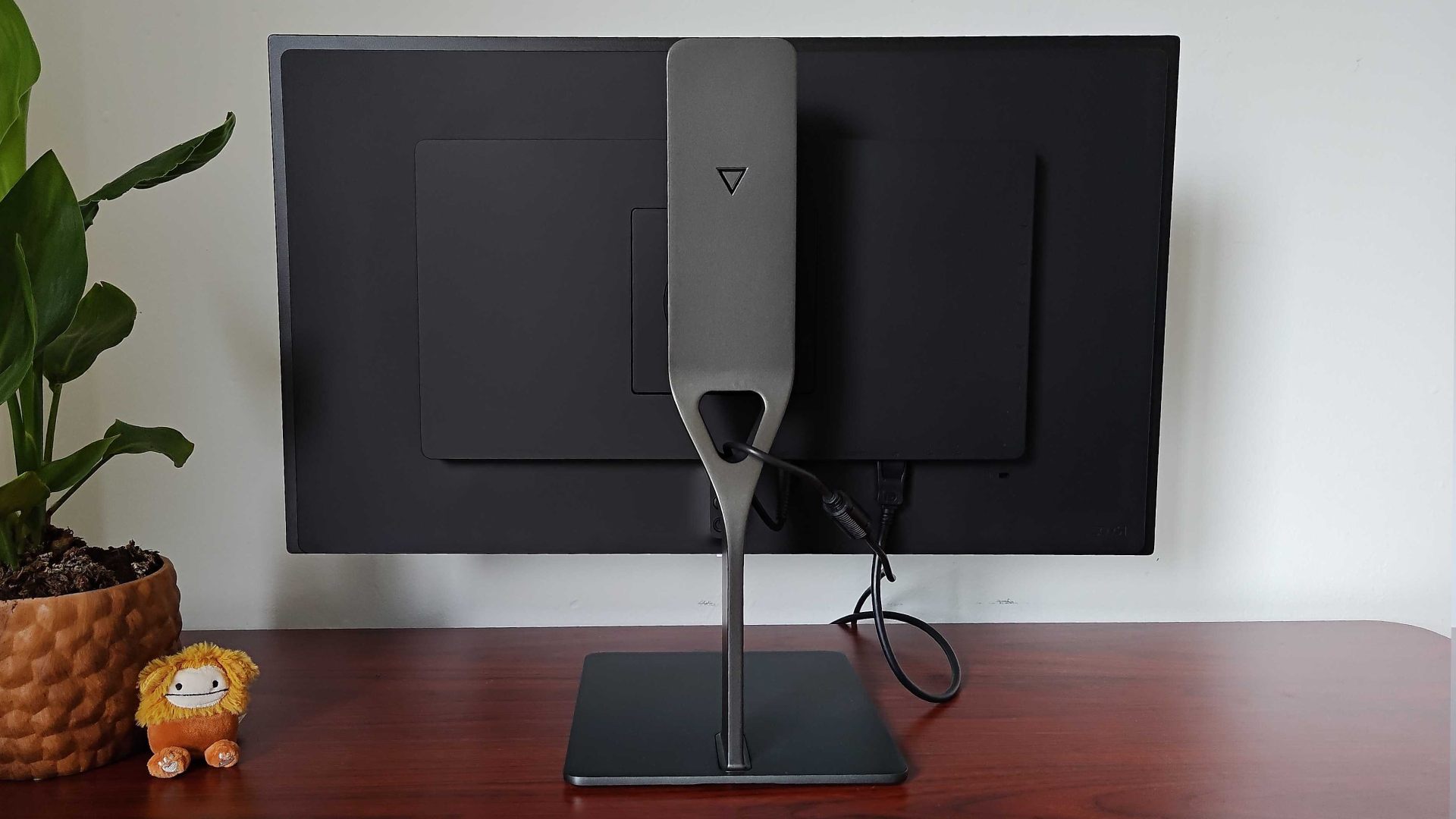
There’s no getting around the fact that the Spectrum Black looks slick, with a vibe that smacks any notion of it being “gamer gear” over the head with a minimalist mallet. Even the new clinically white box it comes in tells me that the company is leaning into the whole Apple Studio alternative vibe, even if the specs don’t quite match up.
That said, the Spectrum design language hasn’t really changed at all compared to the One, with the same angular design keeping the panel thin by confining all the guts to a centralized box. There are still a bunch of USB ports at the side, which is a blessing if you’re planning to swap out devices regularly, and you’ll still find all the buttons around the back of the center.
Speaking of which, the Spectrum Black still uses a fiddly joystick for OSD access, and I’m awaiting the day the market moves on from that trend. You know what’s coming if you read my reviews, as I’m about to start lobbying for all screens to include a remote. When you consider the number of settings stowed away within this monitor, I think it should be at least considered in the future. Plus, we are talking about a display that’s over a grand, so I don’t think it’s unreasonable to want convenient extras.
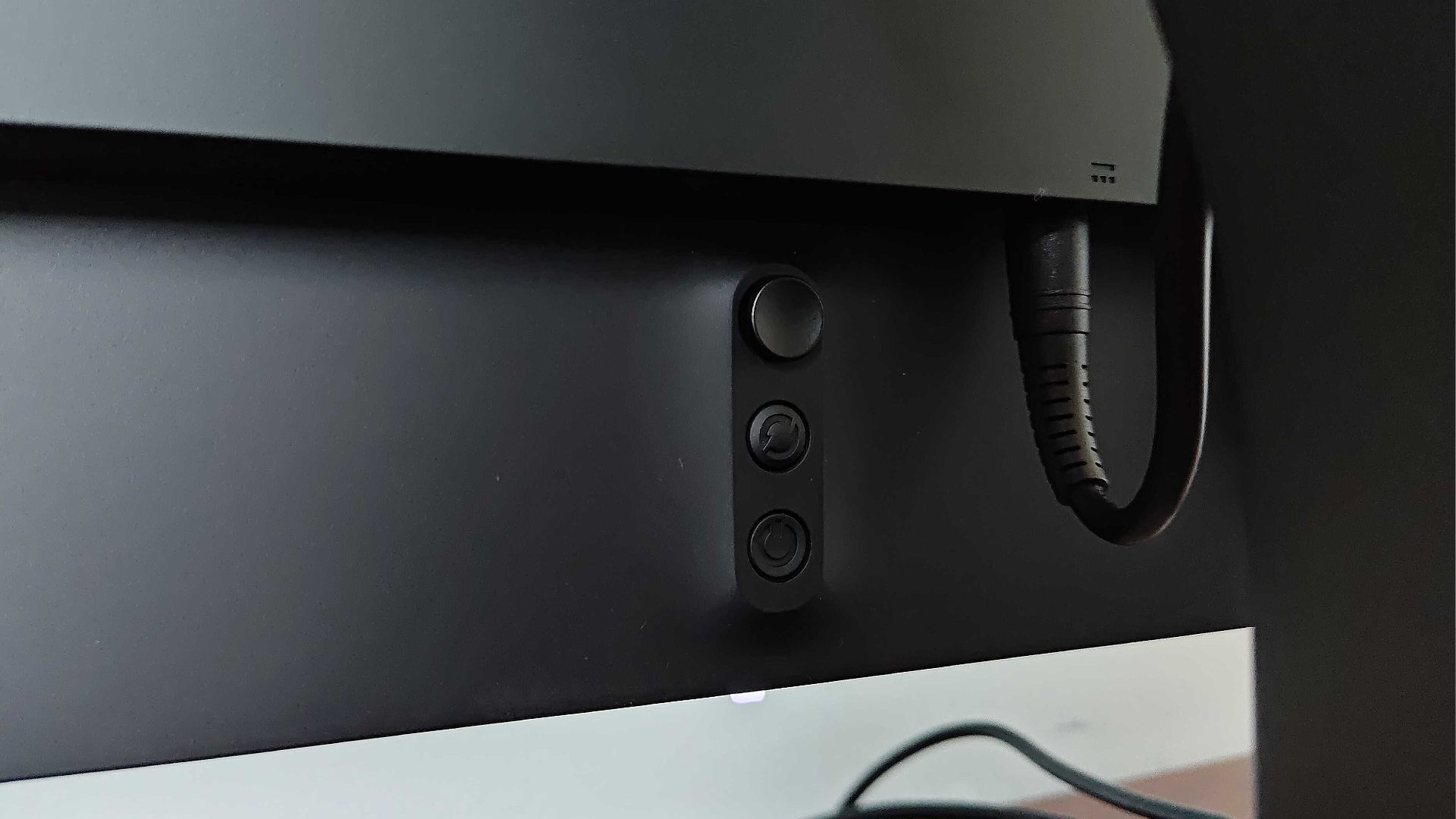
Just as before, the Spectrum Black’s optional stand features one-click installation, meaning it'll be out of the box and on your desk in seconds. Keep in mind that the pedestal costs $99.99, so you’d really expect it to be pretty swish. And, I’d be lying if I said it wasn’t, as it’s a solid piece of aluminium with easy-to-adjust height and pivot functionality, all while rounding off that contemporary vibe the package is going for.
One thing I’ve been debating is whether I think the bezel is a tad thick. I say bezel, but this screen is technically bezel-less like most OLEDs out there. However, just like a bunch of other monitors, there's an additional black border before you reach the actual panel, and for whatever reason, it feels slightly thicker on this display. I did end up comparing it to the Spectrum One and found that there was a few millimetres of a difference which isn’t remotely a biggie but stopped me from gaslighting myself.
Features
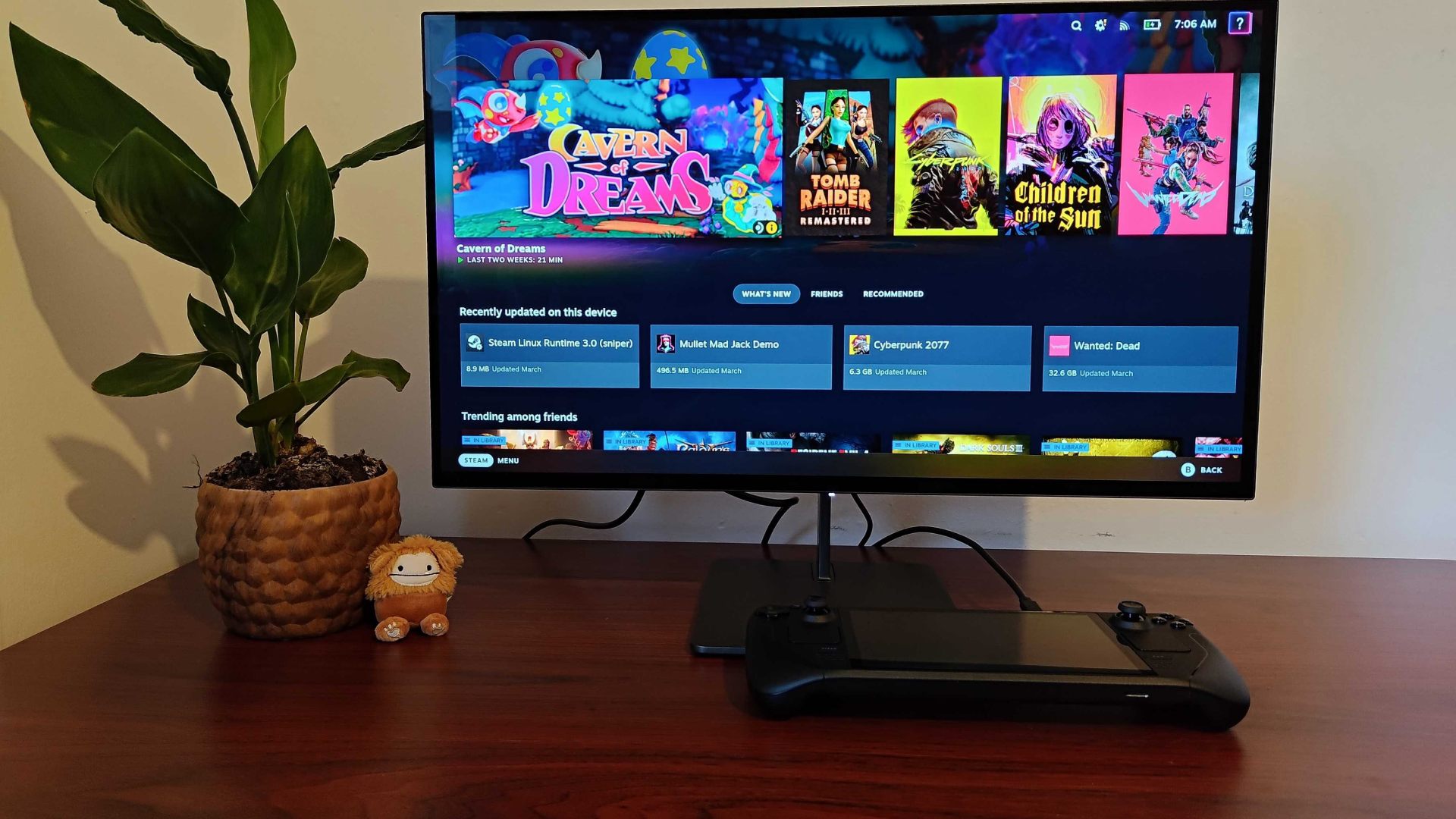
It’s safe to say that Dough’s secret weapon when it comes to displays is its use of glossy screens. Now that the monitor maker has thrown Gorilla Glass into the mix, it has managed to grab all the benefits we’d associate with something like a smartphone and implement them into a desktop experience. Sharper text and elevated colors are all boons that were made apparent with the Spectrum One version, and the new OLED Spectrum Black benefits from the same.
Heading into the Spectrum Black’s OSD menu serves as a visual testament to its many features, as it’s bursting at the seams with options. As I already spoiled, some of those relate to the screen’s KVM and USB-C hub abilities, enabling you to hook up multiple machines and migrate all connected peripherals back and forth with a click. 100W Power Delivery will also charge up most gaming handhelds and compatible laptops while connected, meaning you can use a single cable solution.
Most of the other OSD options the Spectrum Black has to offer are standard fare, with picture settings and pre-sets residing in their own menu. If you’re partial to an integrated crosshair, you’ll be pleased to hear there are a bunch of customizations available, alongside other gaming features like a frame counter. I’d be lying if I said I tend to use either feature during ordinary use, but I was pleased to see a pretty comprehensive maintenance section full of OLED protection tools. I’d say this screen packs more safeguards than most models I’ve tested lately, with the likes of its ‘logo extraction algorithm’ standing out as particularly useful.
Performance
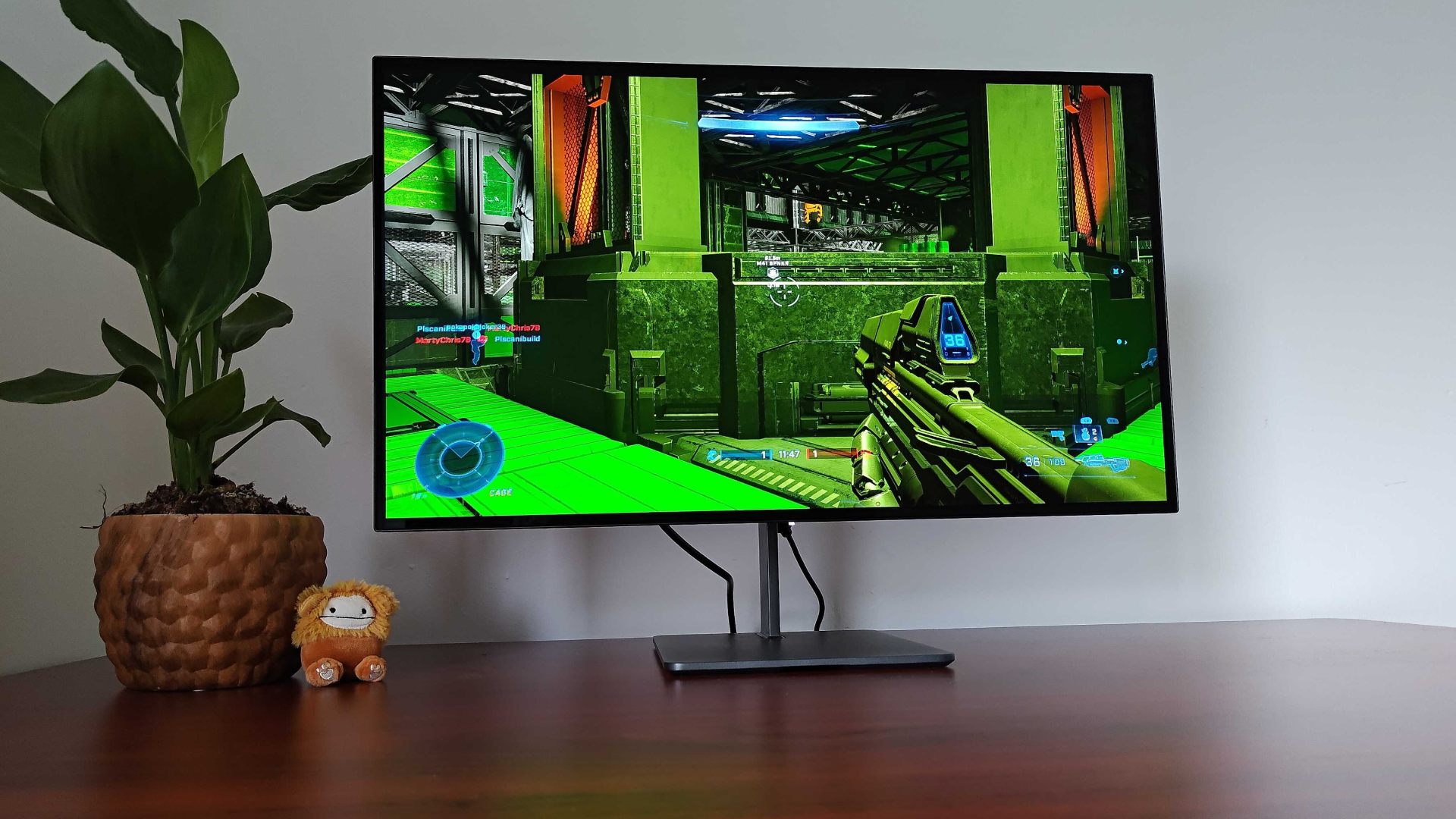
For the most part, the Dough Spectrum Black lives up to my visual expectations, with that OLED screen and glossy coating serving up spectacular vibrancy. That said, I think the face value results are surprisingly close to the cheaper Spectrum One, making for a good argument that IPS displays can still produce tremendous results. Nevertheless, this new model still slaps, especially when fed the right sort of content.
By that, I mean that this OLED screen is hungry for those big, busy adventures that are bursting with color, like the PC port of Horizon: Forbidden West. Aloy’s second outing looks outstanding on the Spectrum Black, with the lush wilderness standing out on the 26.5-inch display. The extra benefits of a glossy screen add a texture that almost wouldn’t be present with a matte finish, and it’s nearly enough to distract from the model’s lower 1440p resolution.
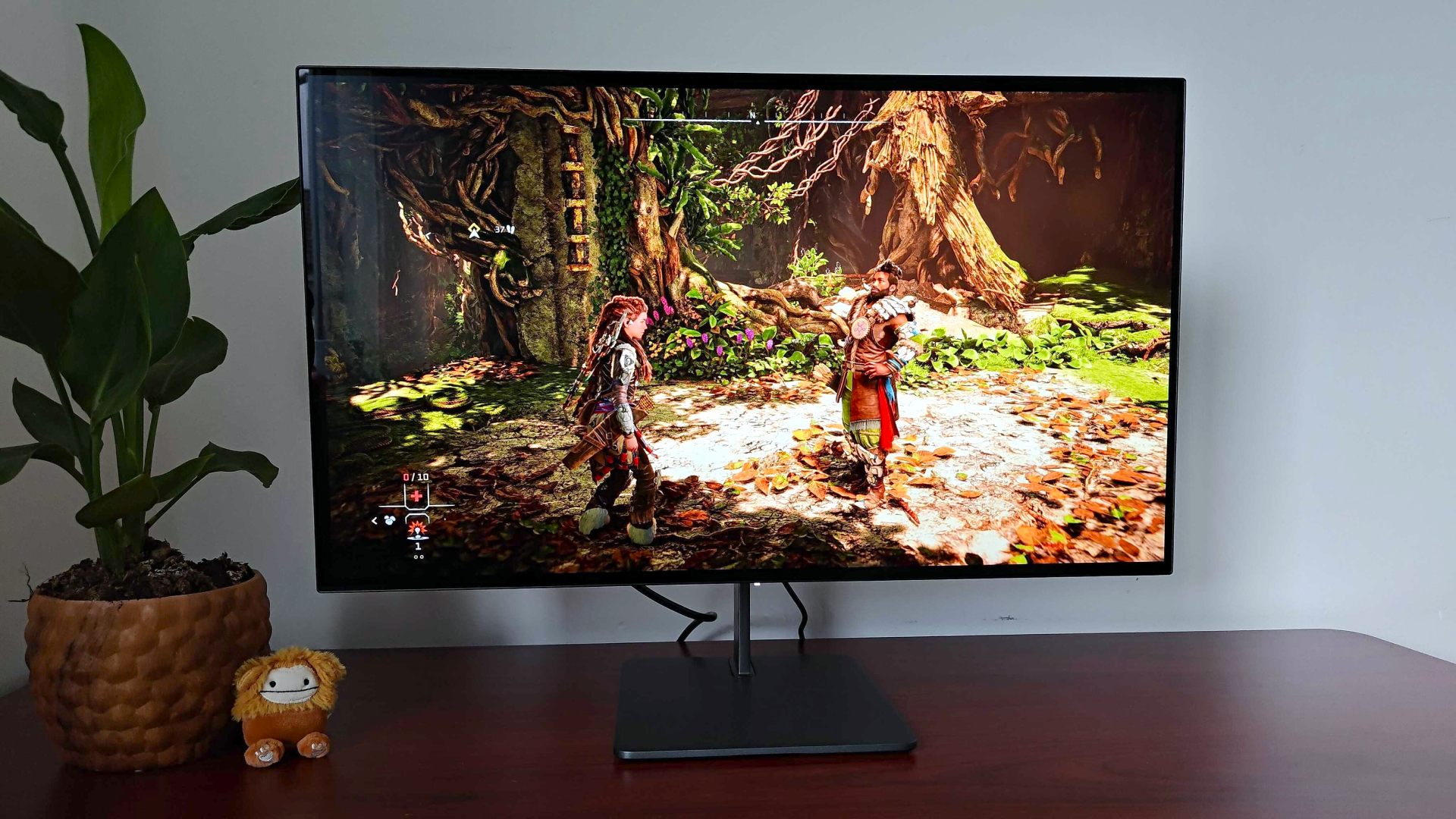

Devolver Digital’s Children of the Sun demo has featured in quite a few of my latest monitor reviews, and now that the full game is out, trying it on the Spectrum Black feels mandatory. Just as before, the supernatural sniping romp looks incredible, with Dough’s screen tech platforming all the benefits of OLED. Once again, subtle details also pop thanks to the glossy finish, which is handy in a dense environment that involves carefully landing a shot on far-away enemies.
Yes, I know, I should branch out and play more shooters than just Halo Infinite, but it’s still my go-to for testing screens. At 240Hz, darting through each map feels nice and snappy, with the Spectrum Black’s response rate holding up where it matters. You could argue it’s subjective, but I do think there’s a difference in feel compared to 144Hz screens like the Spectrum One, even if it’s perhaps not quite enough to justify the elevated price point. Still, if it’s respectable refresh rates paired with minimal latency you’re after, Dough’s latest display will check more boxes.
Should you buy the Dough Spectrum Black?
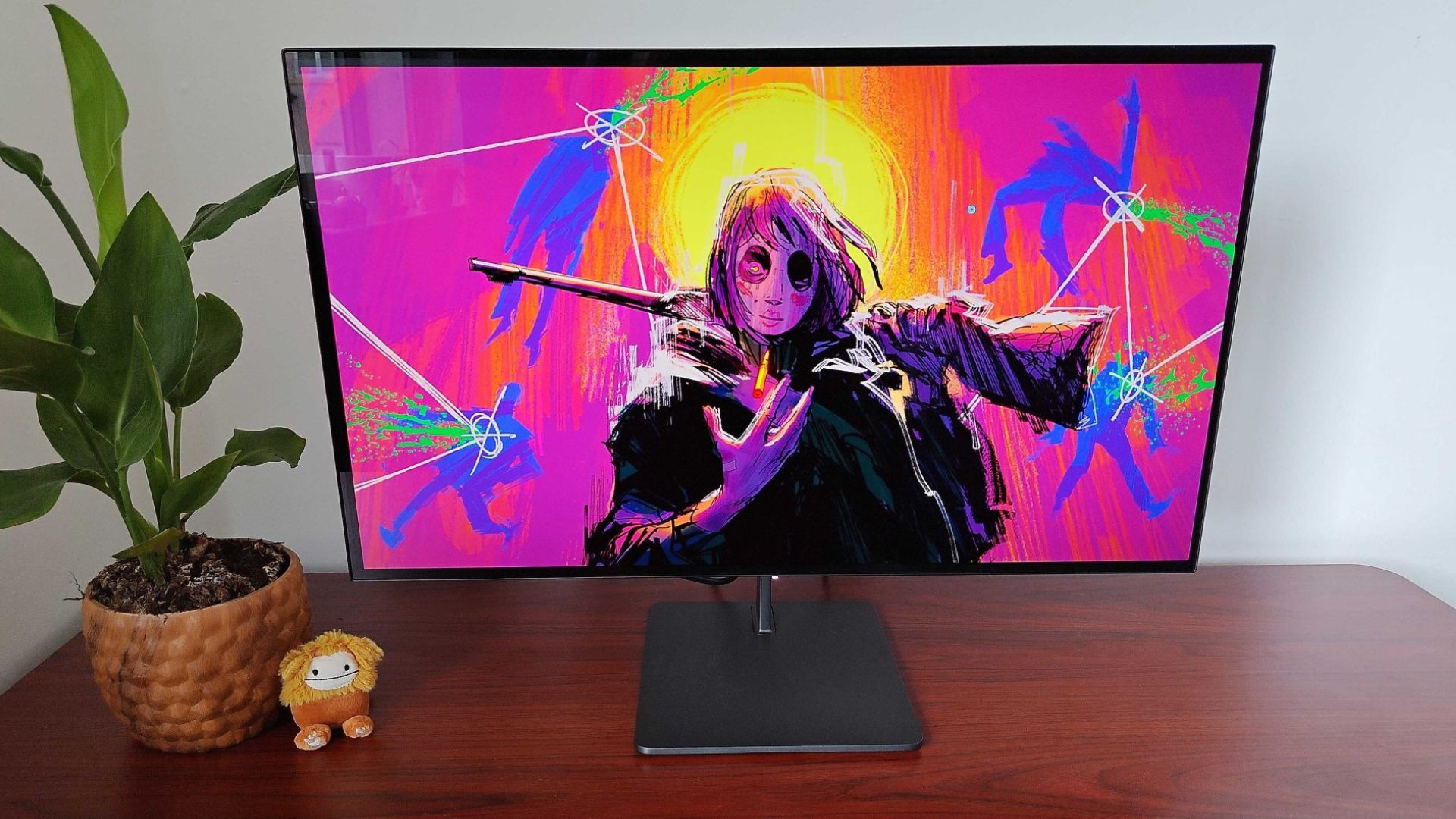
Dough’s OLED monitor could be described as the company’s best display yet, but the fact it’s over $1,000 puts it at a disadvantage. Side by side, there are evident improvements when it comes to contrast and color compared to the IPS Spectrum One. However, I think Dough may have done too good a job with the latter model, and for half the price, I’d struggle to personally upsell myself to the Spectrum Black.
That’s not to say the Dough Spectrum Black doesn’t bring enough to the table. It throws the same punches as some of my other favorite QHD 240Hz screens out there with no glaring technical caveats. Ultimately, settling on this display fully depends on how much you value both OLED panels and the company’s signature glossy coatings, and I reckon Gorilla Glass is the one thing this monitor provides above its competition.
How I tested the Dough Spectrum Black
For a month, I used the Spectrum Black as my main monitor for both playing games and productivity. During that time, I delved into the likes of Horizon: Forbidden West and Children of the Sun, while also jumping into Cyberpunk 2077 and Halo Infinite for benchmarking purposes.
For more information on how we test gaming monitors and other products, visit our GamesRadar+ Hardware Policy for a full rundown.







